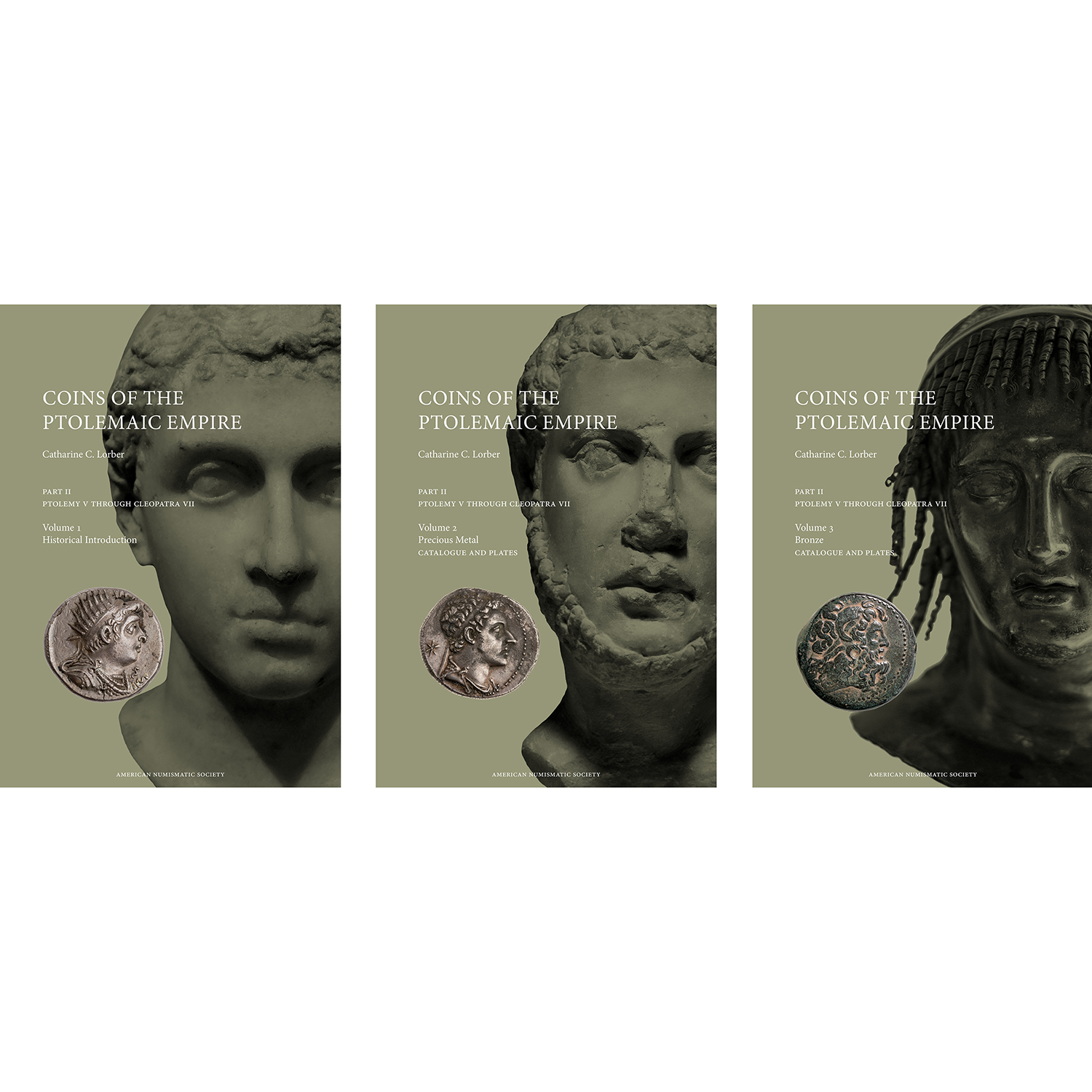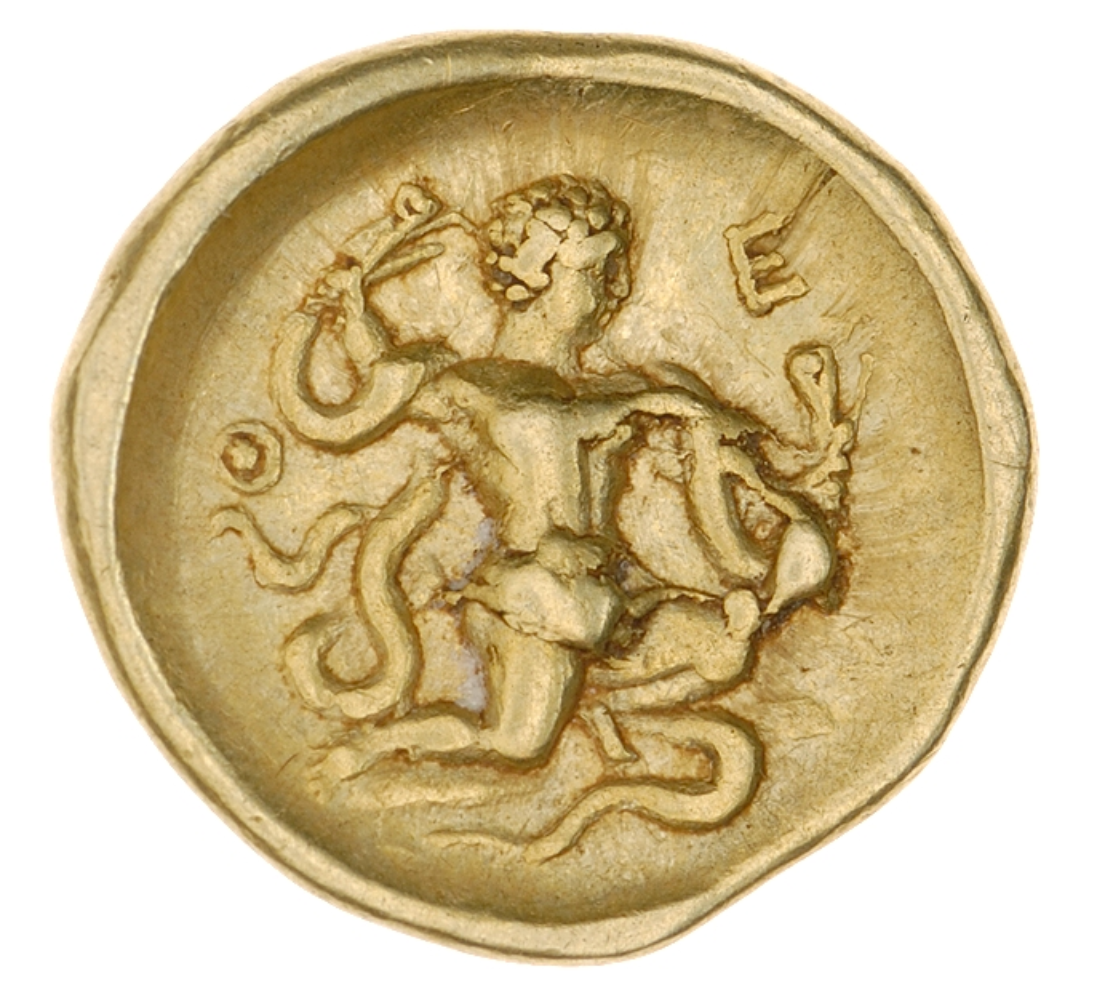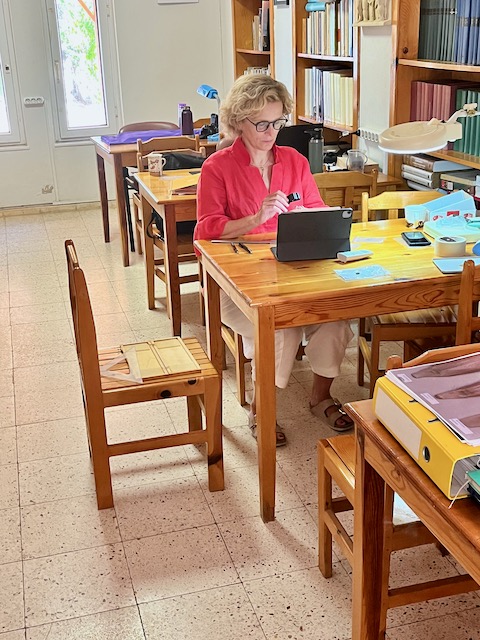Making Sense of Greco-Roman Legends on Western Kṣatrapa Coinage
By Jeremy Simmons
For my ANS Seminar Project, I decided to look at silver coins of the Western Kṣatrapas, who ruled in the modern day Indian states of Gujarat and Madhya Pradesh from the mid-first to early fifth centuries CE (Figure 1). These coins have been indispensable for reconstructing the chronology of the Western Kṣatrapa kings, as well as the line of succession, due to the presence of dates (in the Śaka Era) and patronymics on coins. However, the feature of these coins that drew me to this project is the obverse legend, which appears to be written in a script that mixes Greek and Roman characters at random.
These legends have been little discussed in scholarship (as opposed to the Brāhmī legends on the reverse), and have been variously labeled “Greek,” “corrupt/pseudo/blundered Greek,” or “Greco-Roman,” without much consideration of the larger implications of these different descriptions. In fact, it is a general practice to not record the obverse legends of Kṣatrapa coins in catalogues or other publications: cataloguers justify their actions by stating that the legends become corrupt over time and cease to have any meaning; and those publishing or auctioning a single coin tend not to transcribe the obverse legend at all.
This lack of scholarly attention arises from the assumption that the obverse legends at one point communicated written language—specifically, the coins of the early kings like Nahapāna, which have Greco-Roman script transliterations of the Prakrit reverse legends (Figure 2)—but that later die-cutters, due to their lack of skill or knowledge of Greek and Latin, merely rendered corrupt versions as a form of ornamentation. I believe this narrative of decline, first suggested over a century ago, is not only based on the limited evidence of early collections, but has been perpetuated by a regrettable practice of not recording positive data.
![Fig. 2: Nahapāna coin, with transliterated obverse legend ΡΑΝΝΙω ΞΑΗΑΡΑΤΑC ΝΑΗΑΠΑΝΑC (rannio ksaharatas nahapanas, “of king Nahapāna, the Kṣaharata”; mid first century CE) [CNG Auction 369, Lot 24, 24 Feb. 2016]](https://numismatics.org/wp-content/uploads/Figure2.jpg)
In order to correct the treatment of obverse legends on Kṣatrapa coins in scholarship, I have created a database of Greco-Roman obverse legends found on silver coins minted during the three-and-a-half centuries of Kṣatrapa rule (from Nahapāna to Rudrasiṃha III). I gathered these legends from specimens presented in various museum catalogues, auction listings, and publications. While this task involved some difficulties due to the damaged nature of most obverse legends (Figure 3) and the poor quality of photographs, I managed to assemble a large corpus of data in order to supplement existing descriptions and serve as the basis of my initial observations.
It is my hope that these observations will contribute to the following aims: 1) determining which paleographic features of the obverse script are Greek versus Roman, in order to mitigate the problem of variable terminology; 2) outlining possible sources of inspiration for these legends, whether it be local precedents (e.g., Indo-Greek, Indo-Scythian, and Indo-Parthian), imported Roman coinage, or imitation Roman coinage produced in India (Figures 4 and 5); 3) uncovering any evidence of conscious design behind these legends (as opposed to mindless copying as previously suggested), indicated by similar patterns of letters, standardization of legends, etc.; 4) and, most importantly, speculating why the Kṣatrapa kings would design coins with unreadable obverse legends alongside very legible Brāhmī legends and numerals.
![Fig. 4: Indo-Greek drachm of Apollodotus II, with Greek obverse legend (early first century BCE) [BM 1922.0424.120]](https://numismatics.org/wp-content/uploads/Figure4.jpg)
At the very least, it is my hope to show the merits in investigating elements of a coinage tradition that many have disregarded as “meaningless.”
![Fig. 5: Imitation Roman aureus of Septimius Severus, found in India (early third century CE?) [ANS 1905.57.375; photo Klaus Vondrovec]](https://numismatics.org/wp-content/uploads/sites/3/Figure5.jpg)
Today’s post is written by Jeremy Simmons, a PhD candidate in the Classical Studies program at Columbia University. He has written on the topic of Indo-Roman trade, and in particular, the spice trade in antiquity. His dissertation will look specifically at patterns of consumption in the larger Indian Ocean trade network, including the engagement between Indian monetary systems and imported Roman coinage. His project, as a participant of the the 2016 Eric P. Newman Graduate Summer Seminar, focuses on Western Kṣatrapa coins.



![Fig. 3: Vijayasena coin, with corroded traces of obverse legend (r. 238-250 CE) [ANS 1978.51.6]](https://numismatics.org/wp-content/uploads/Figure3.jpg)



